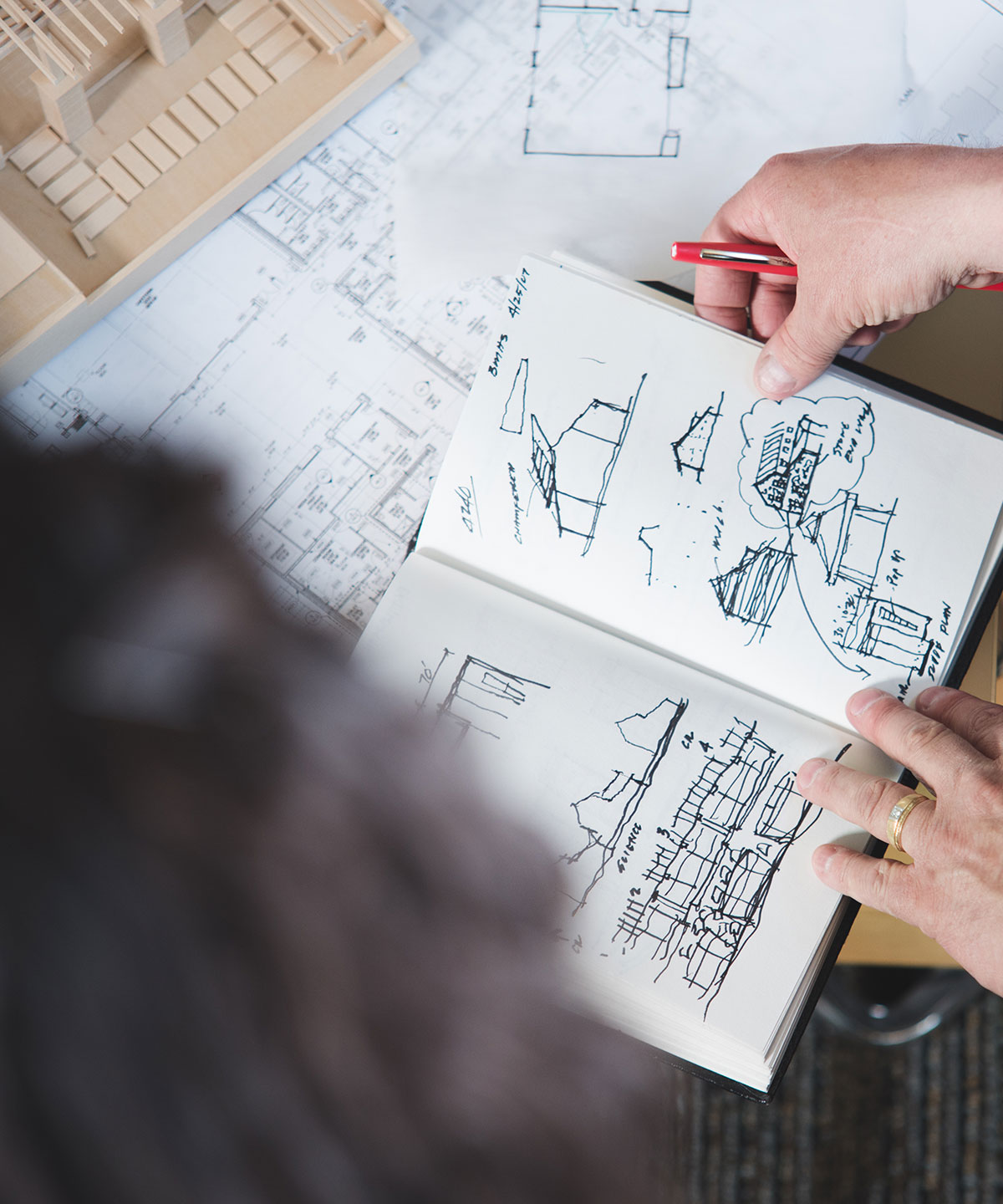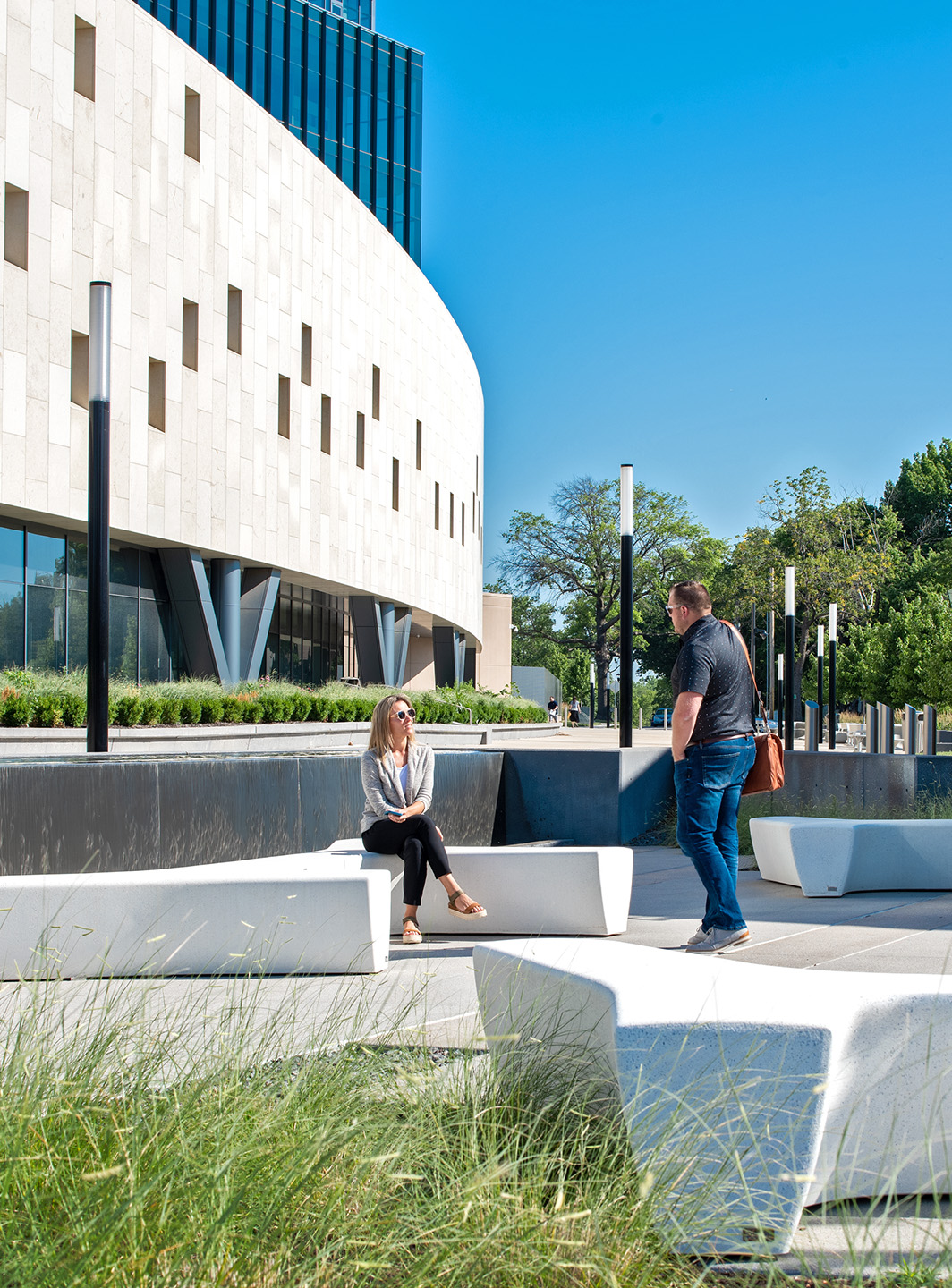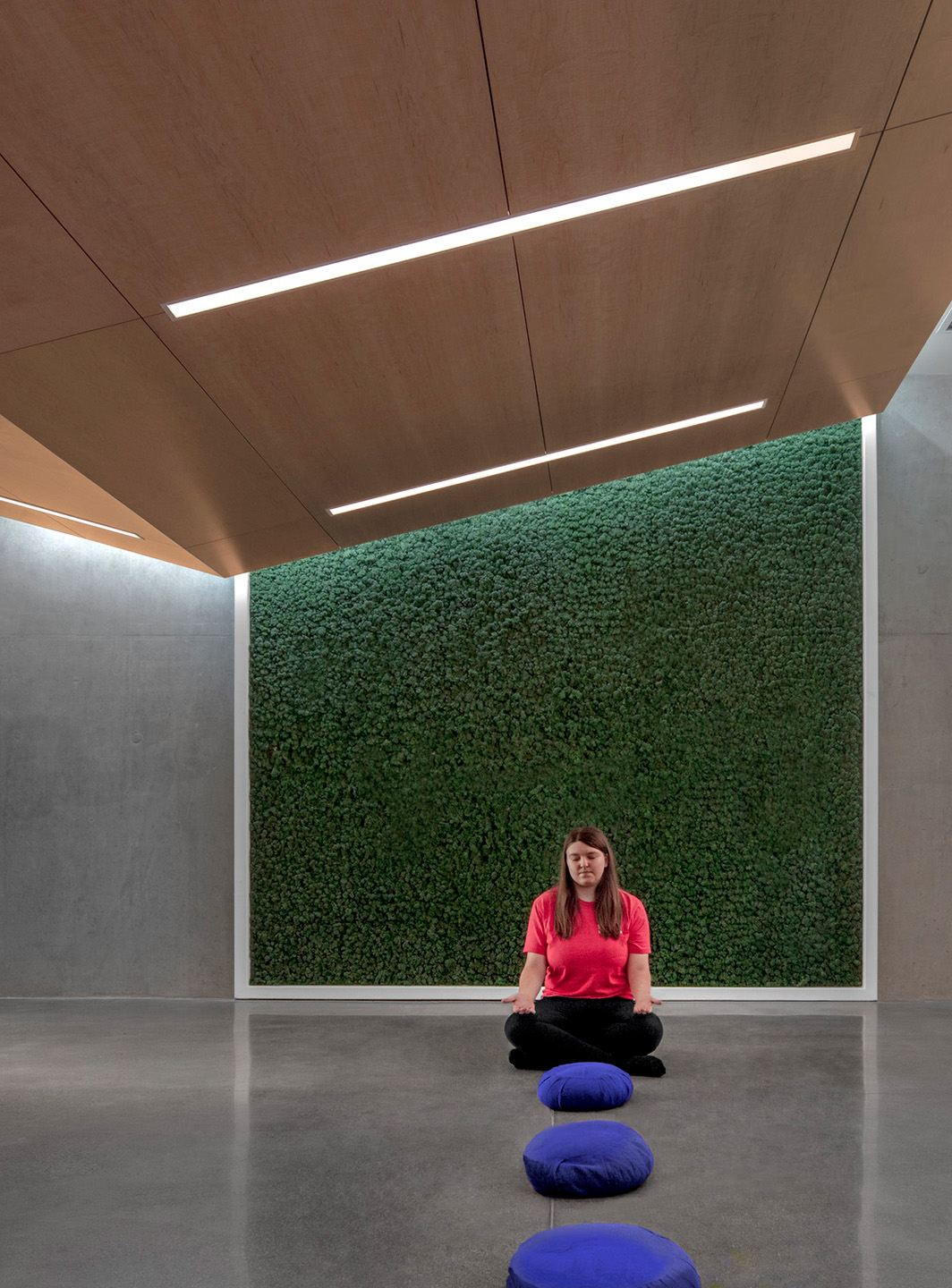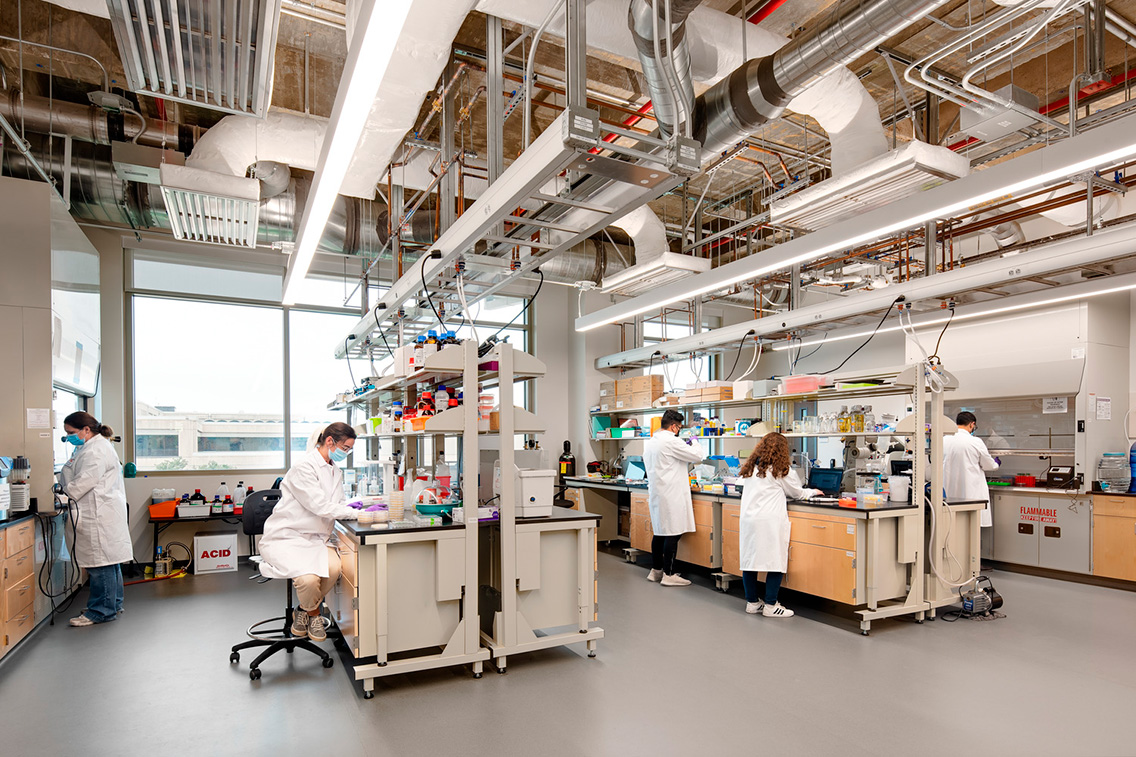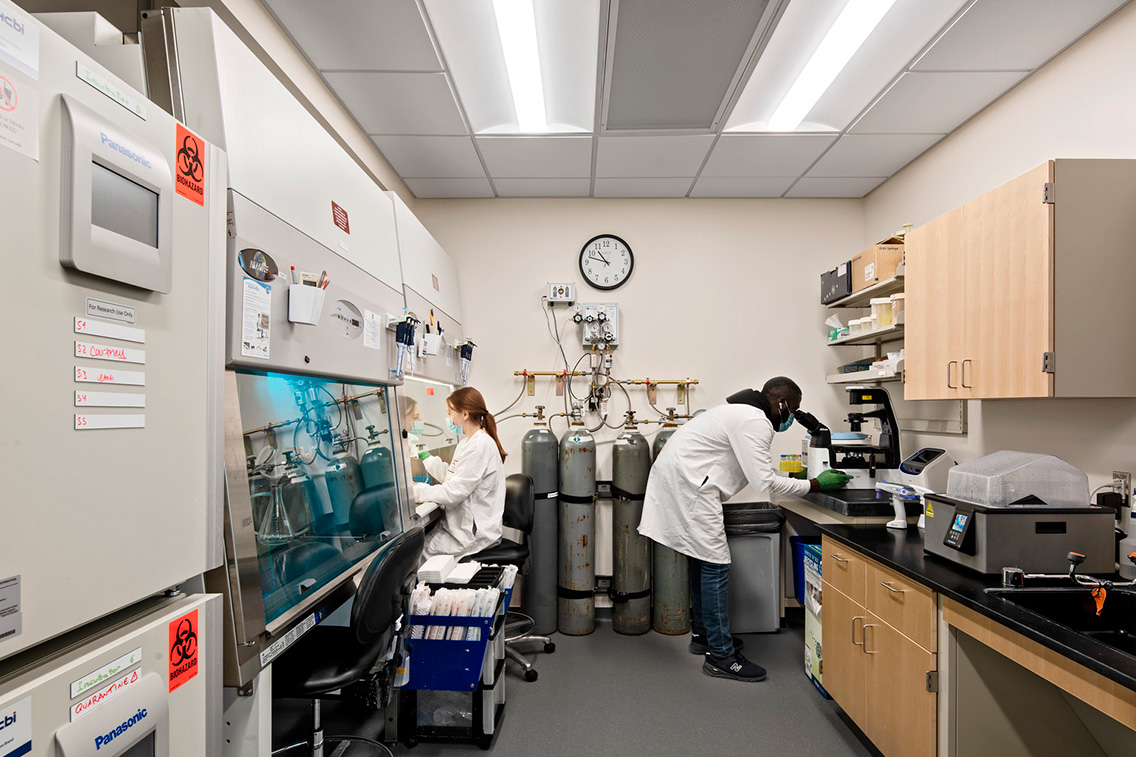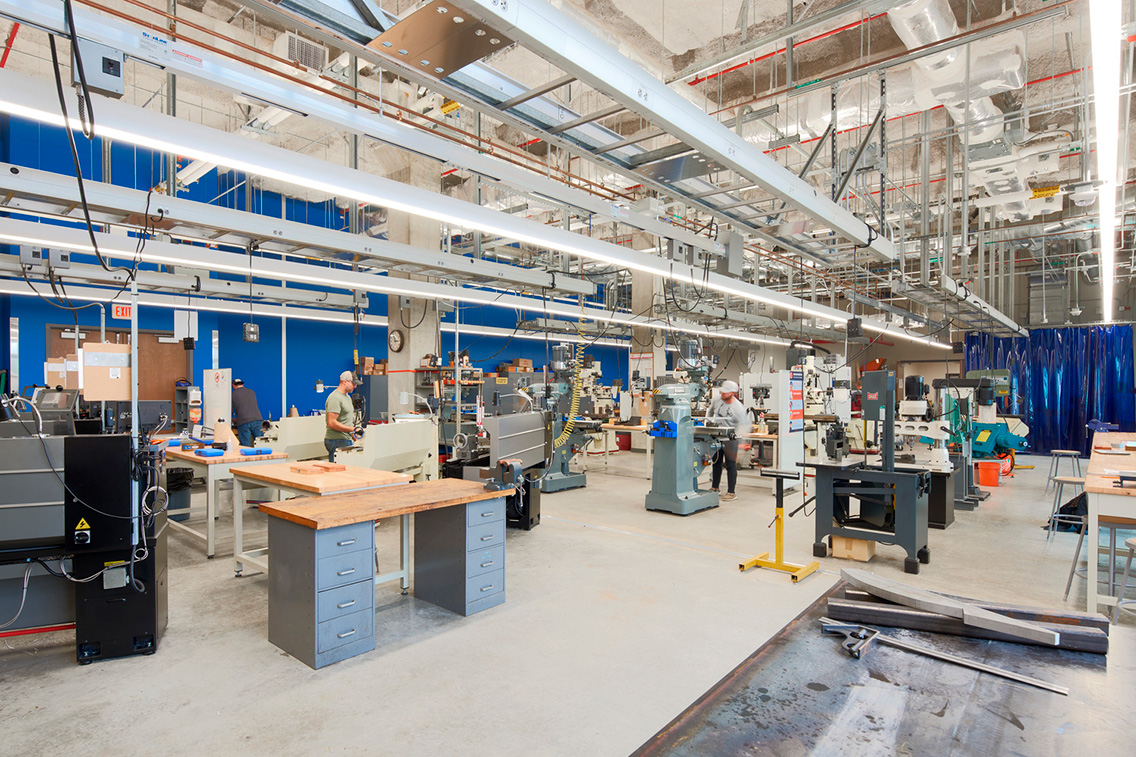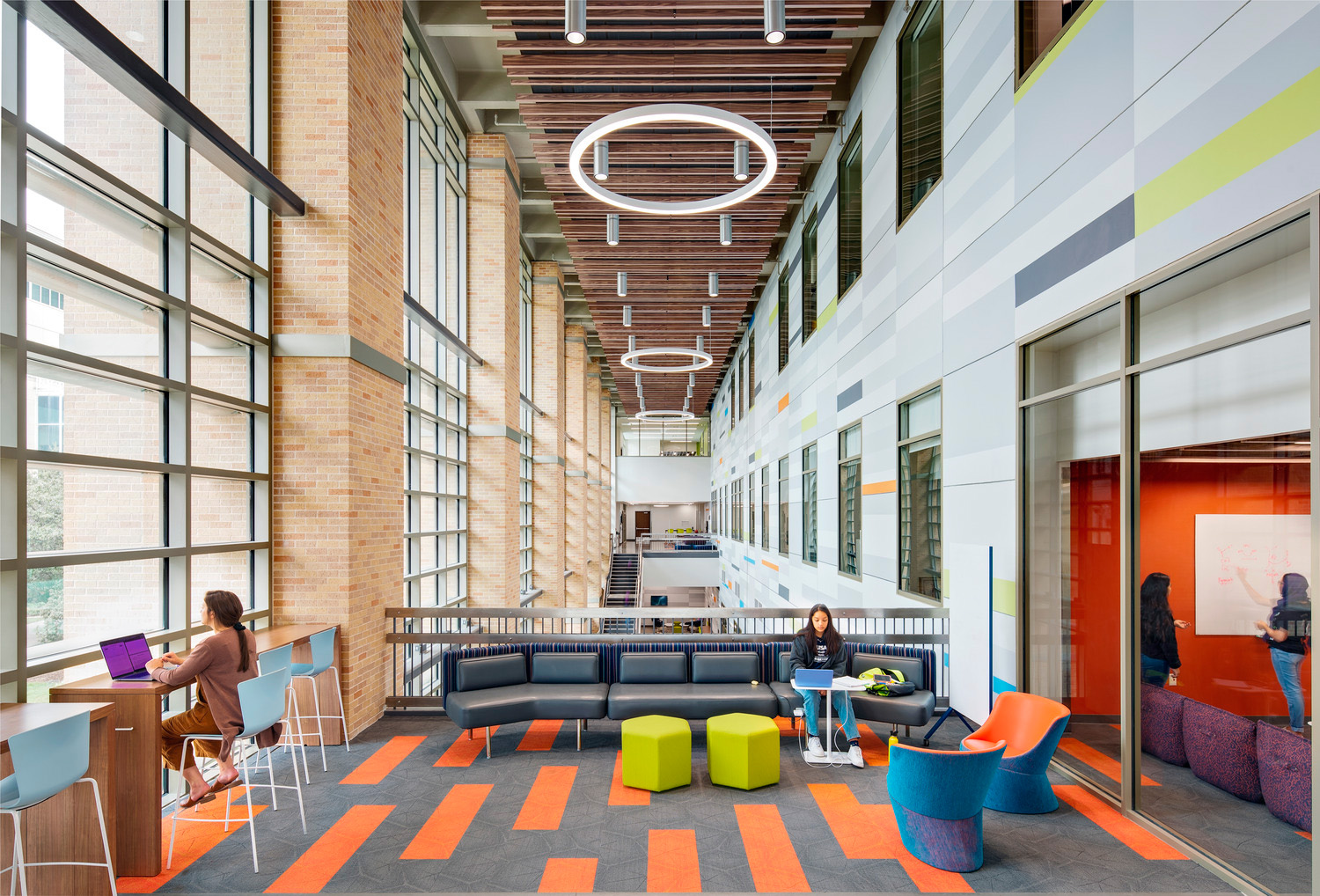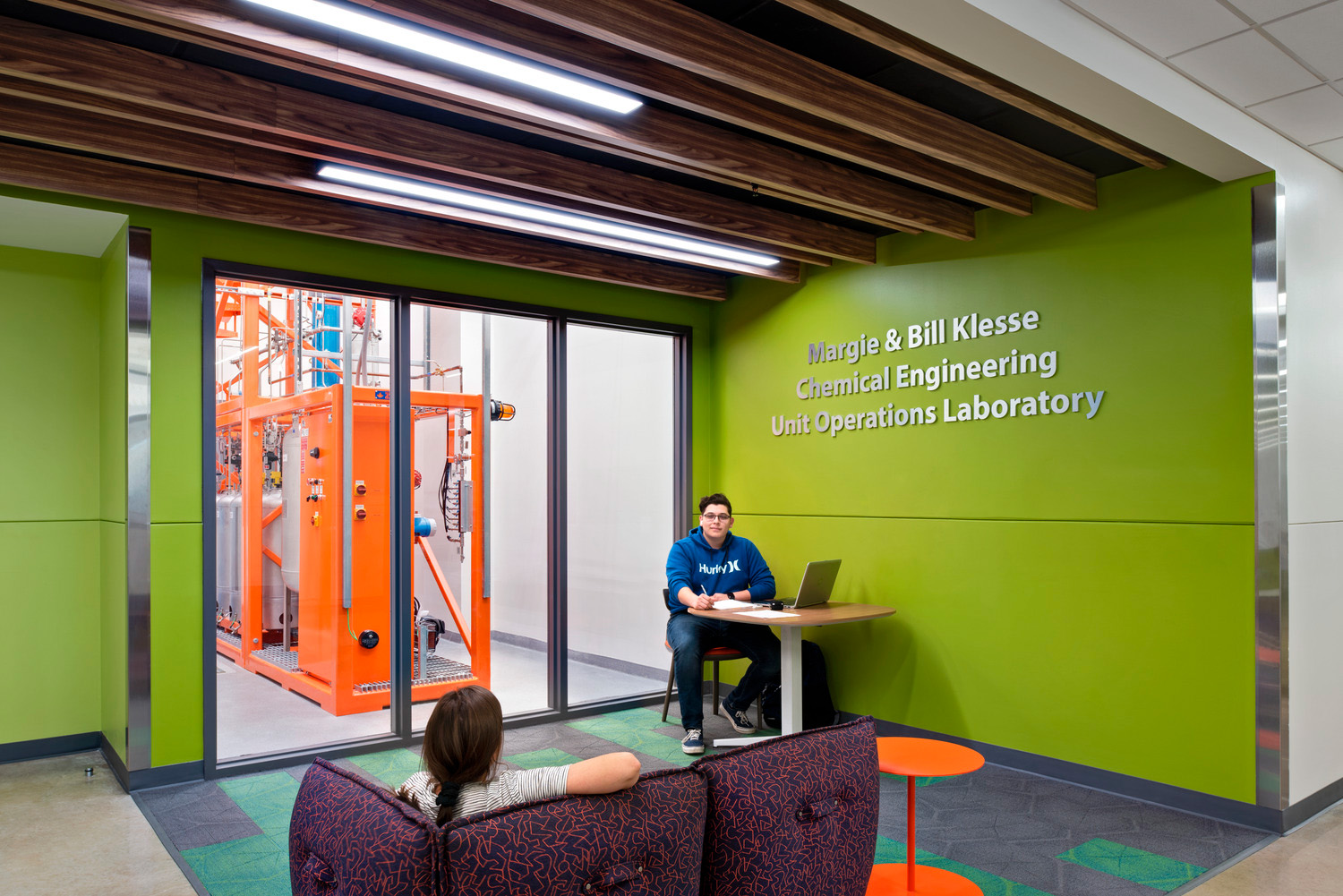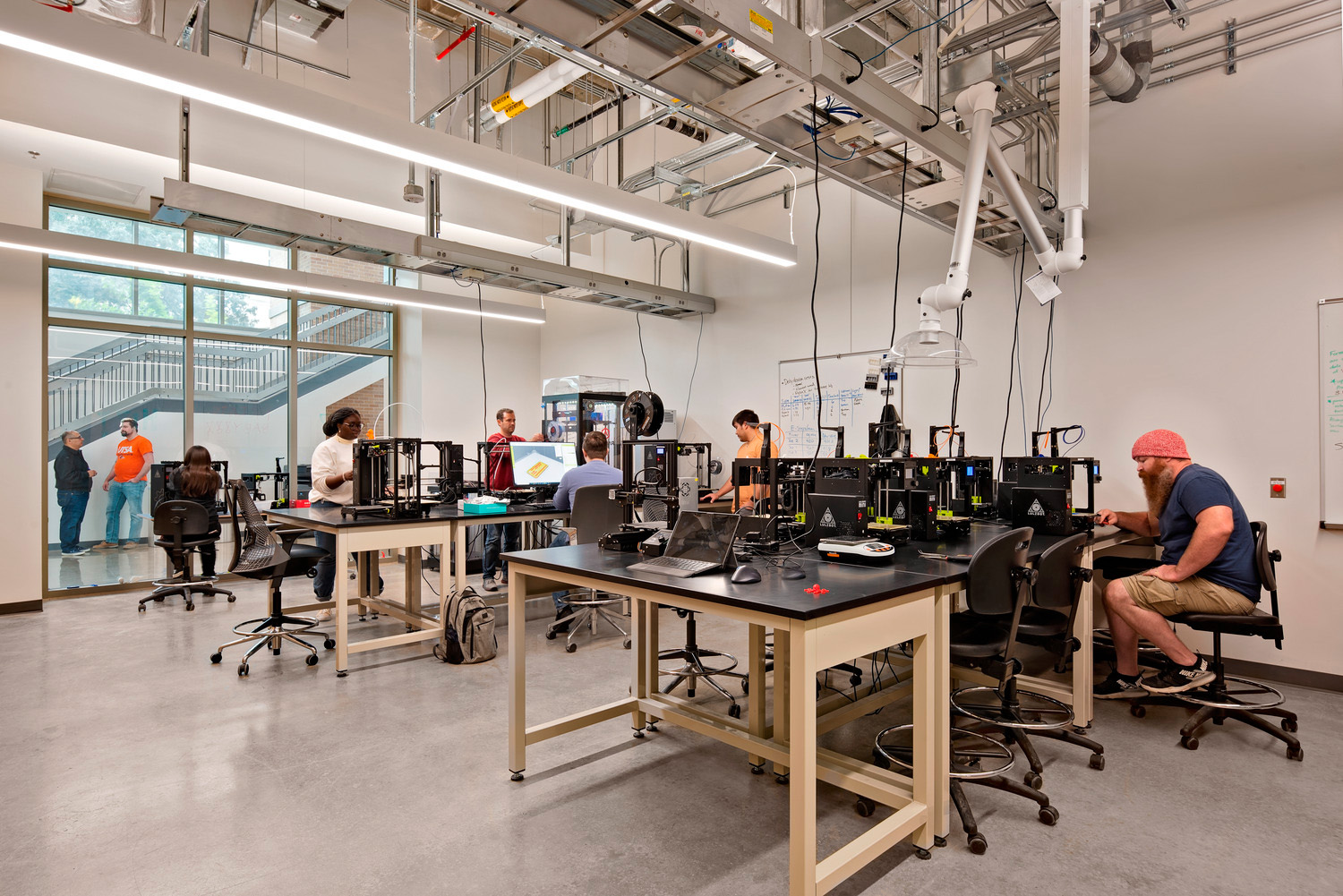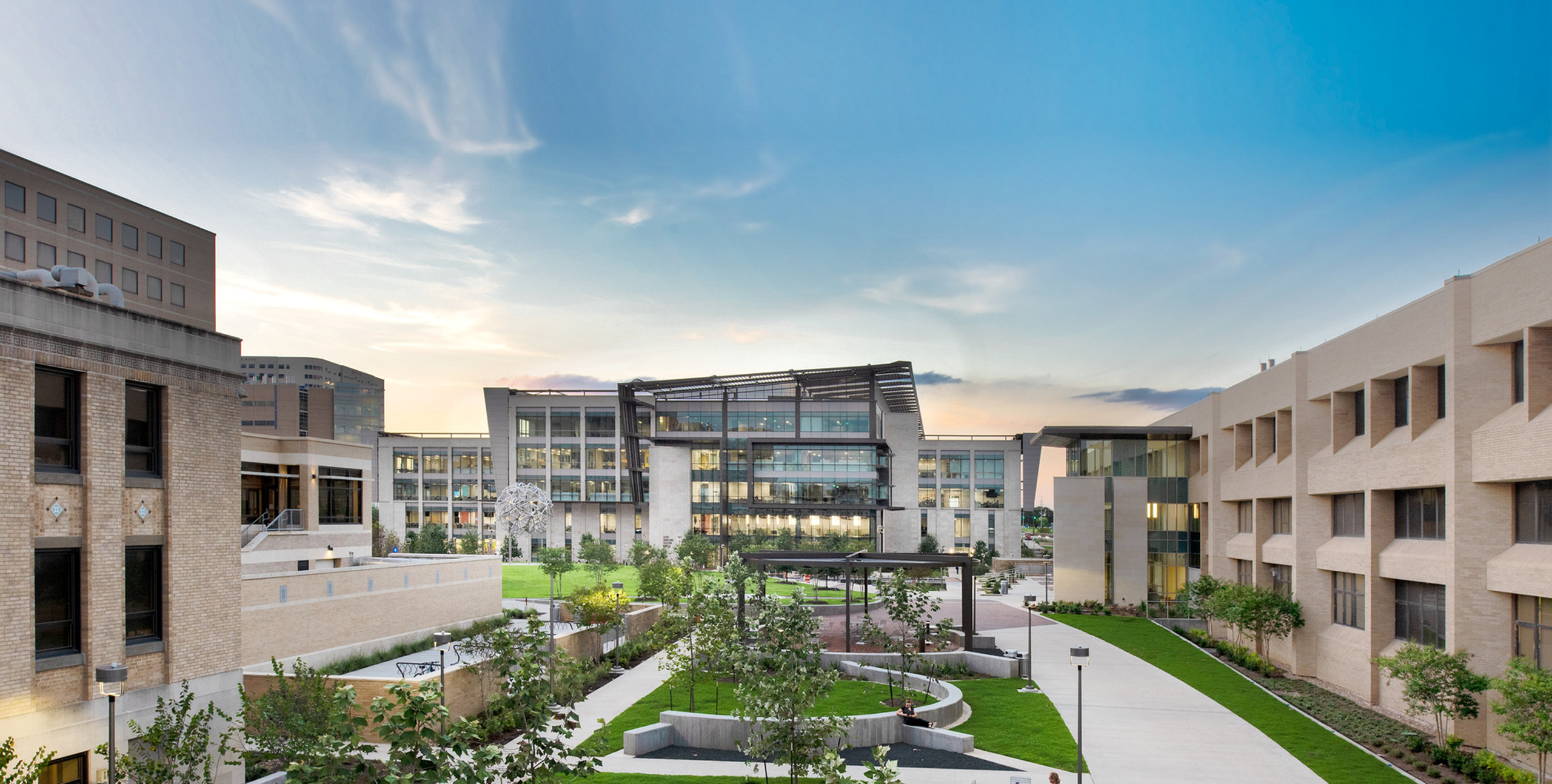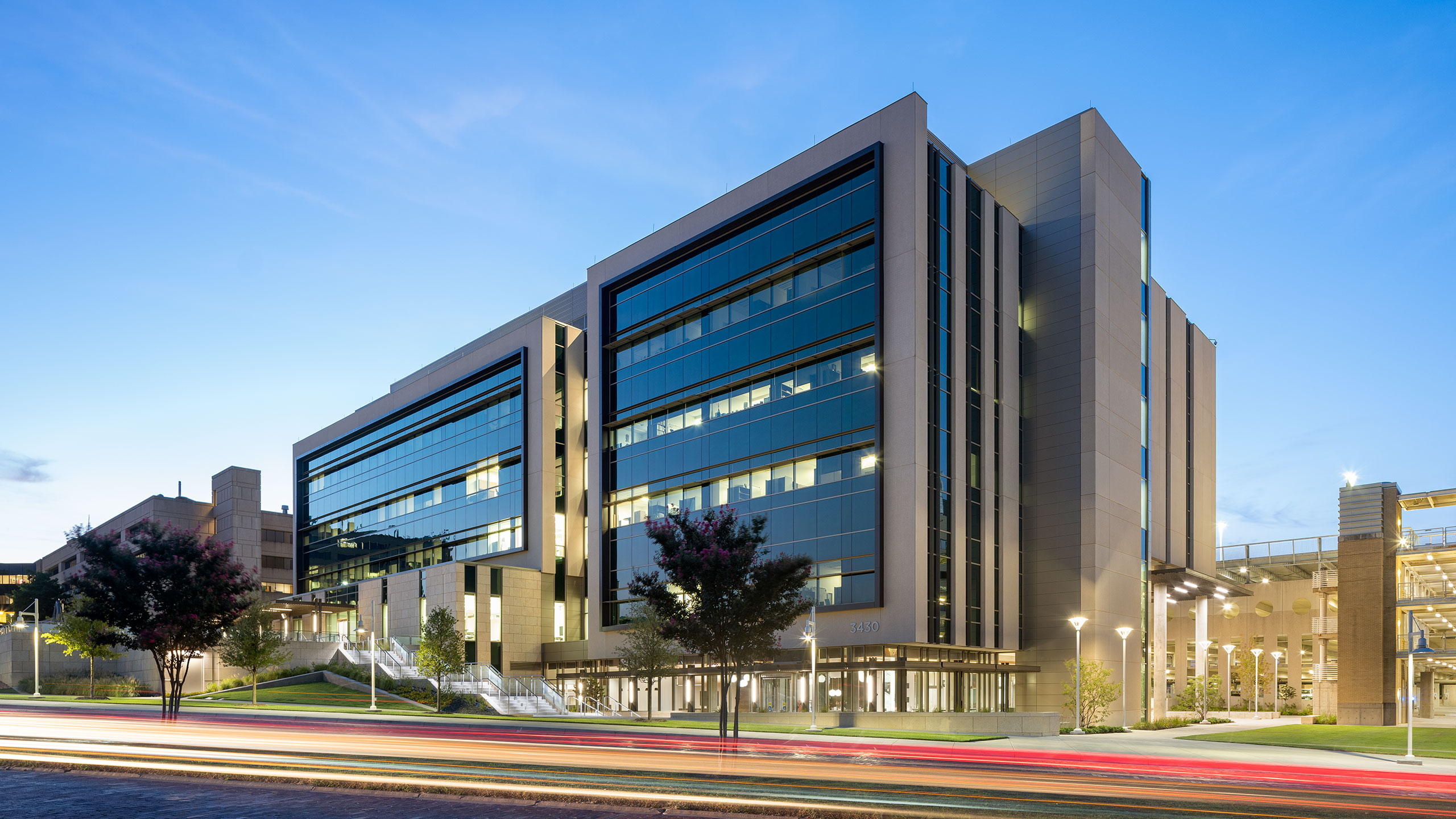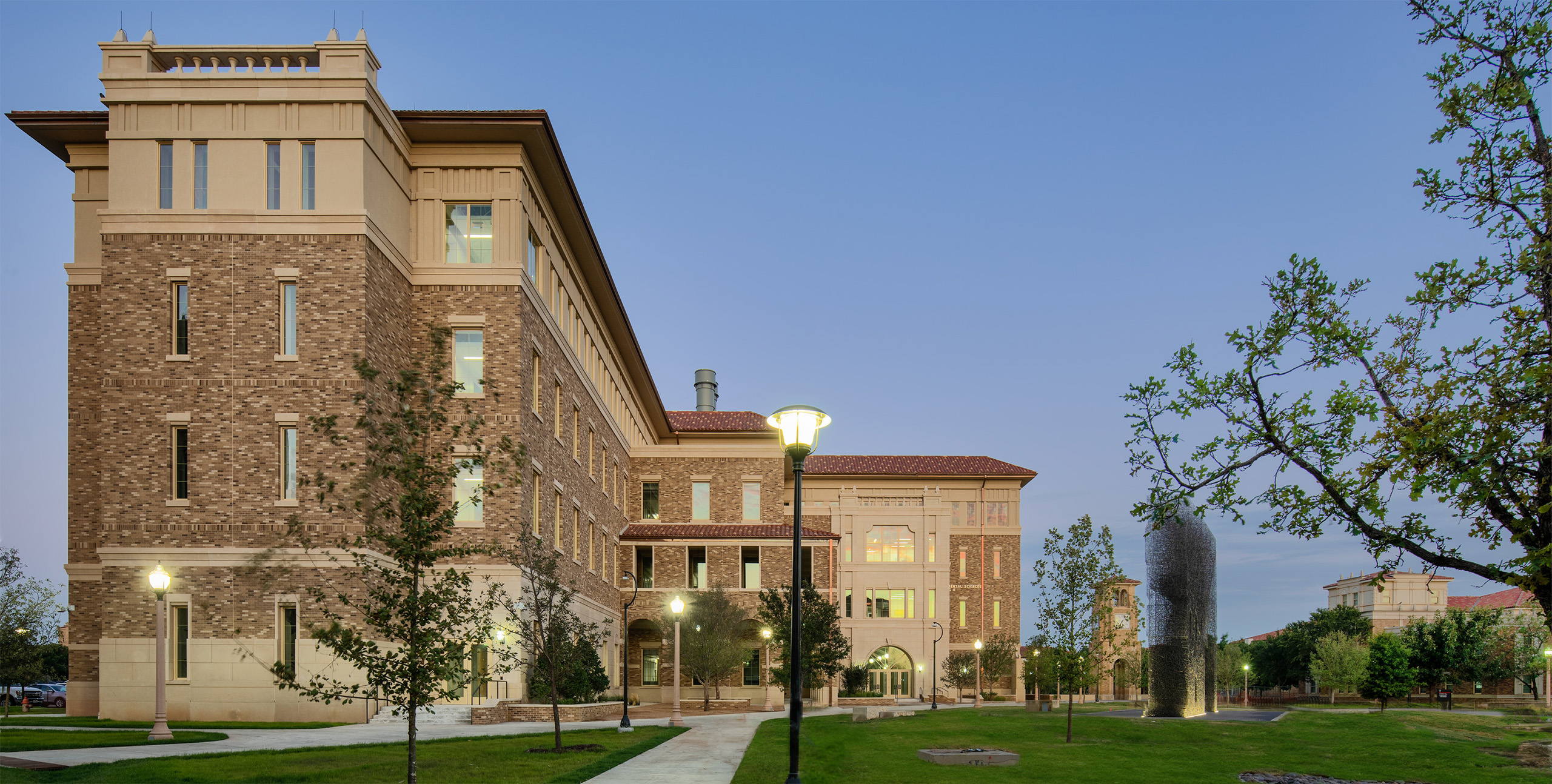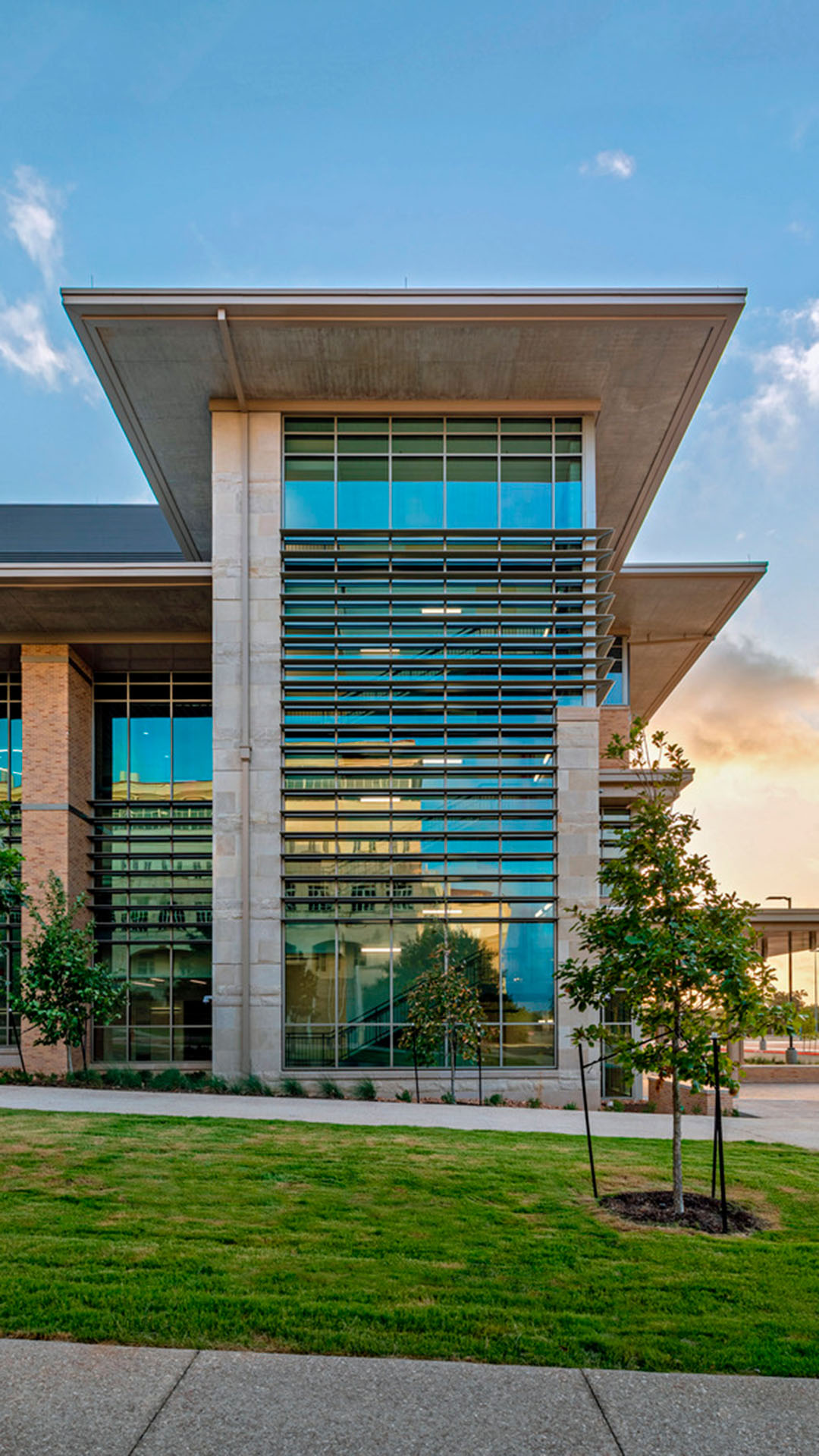
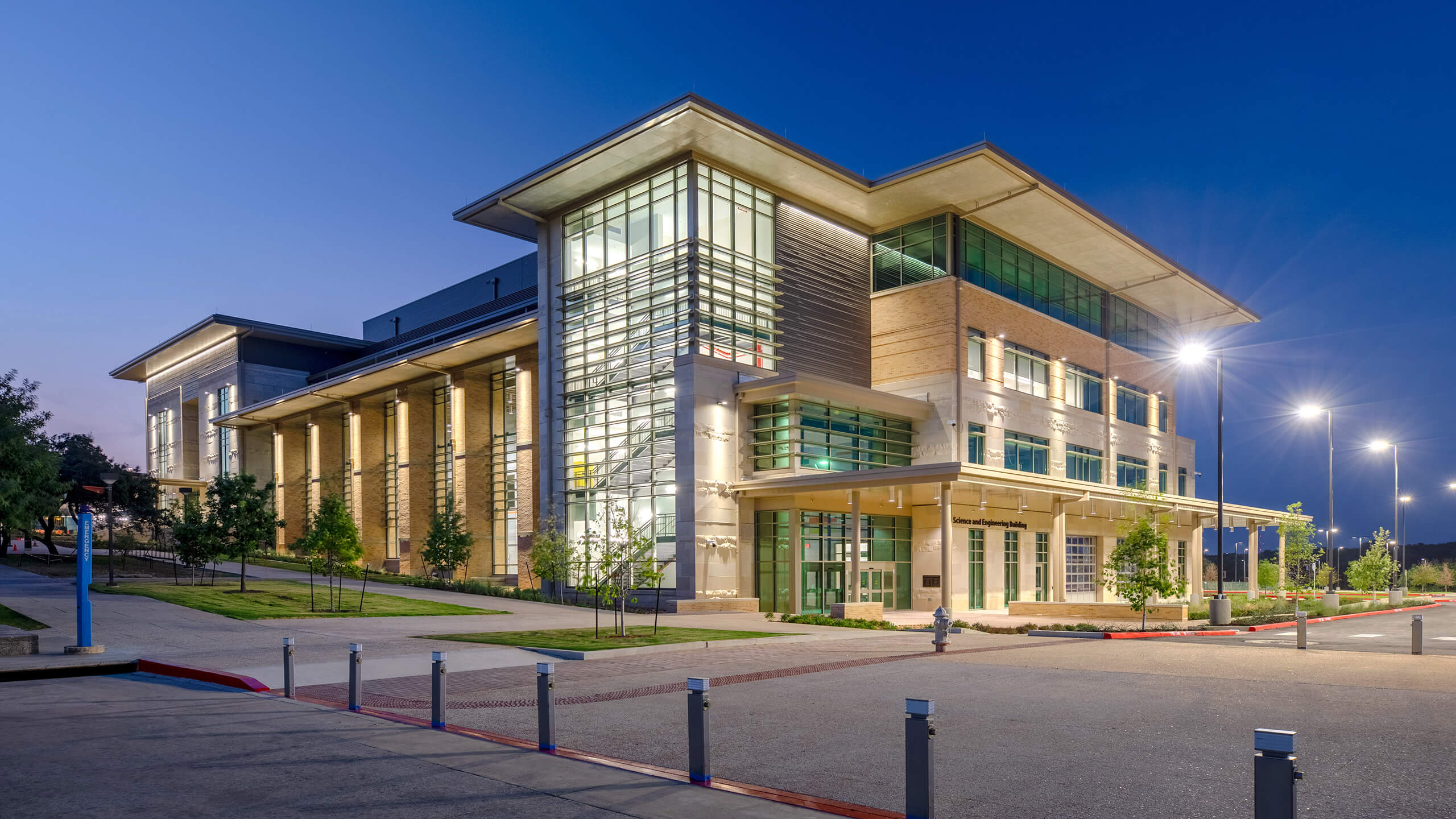
Science and Engineering Building
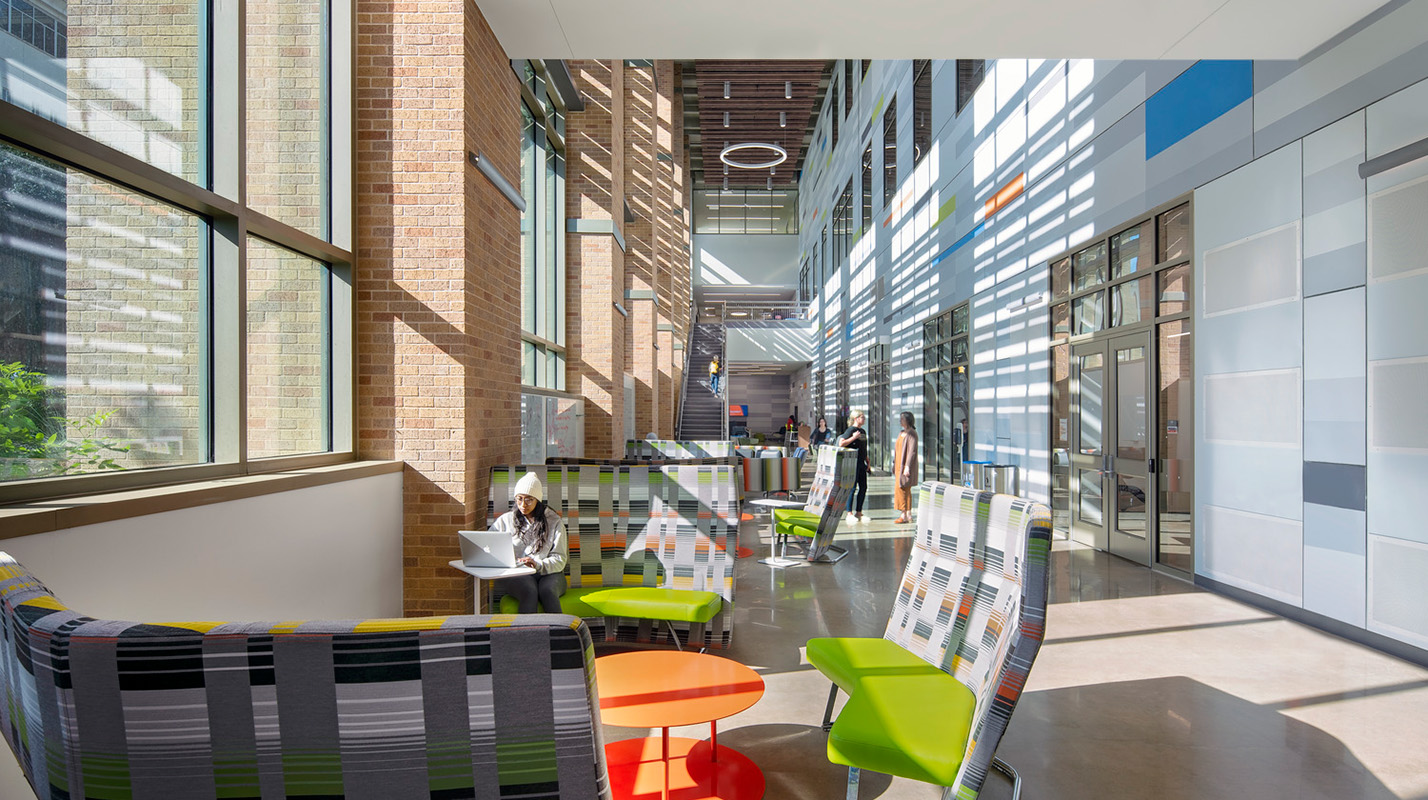
A transformative showcase for STEM education at UTSA
The Science and Engineering Building (SEB) is a 140,000-square-foot STEM facility that includes classrooms, faculty offices, and science and engineering research and instructional labs. A major goal of the new facility was to provide a home for undergraduate science and engineering students, where student-to-student and student-to-faculty interactions could occur on a regular basis. Instructional spaces are provided to enable experiential learning, and to facilitate multiple teaching approaches. The SEB is a transformative showcase for the campus and complements the existing campus architectural vocabulary, adhering to current direction of UTSA’s campus master plan.
Hub for senior design projects across all engineering disciplines
A key element of this project was the creation of an 18,400-square-foot makerspace supporting engineering students of all disciplines. The makerspace provides an open area for project assembly and storage, with associated support spaces including machine and wood shops, a metrology lab, electronics lab, and design and meeting space. The makerspace also includes large overhead doors opening to a covered outdoor area for both assembling and showcasing projects.
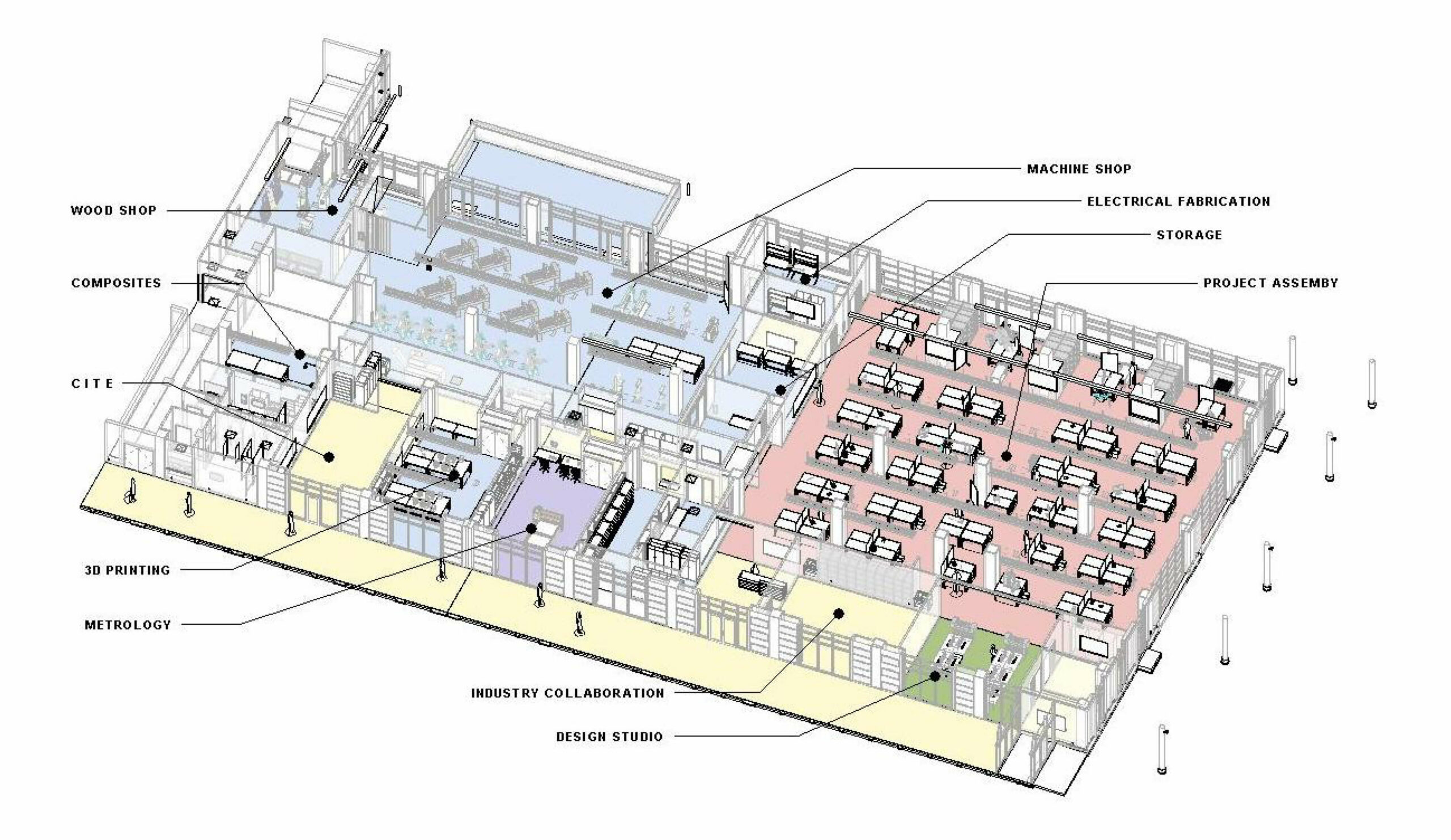
[Treanor] has been instrumental bringing together groups of faculty, staff, and students to help define the requirements for the new complex, provide guidance on the newest and most reliable arrangements of facilities, and build a consensus for what the next generation of students will come to know as their new home.
JoAnn Browning, Vice President of Research, Former Dean of the College of Engineering at UTSA
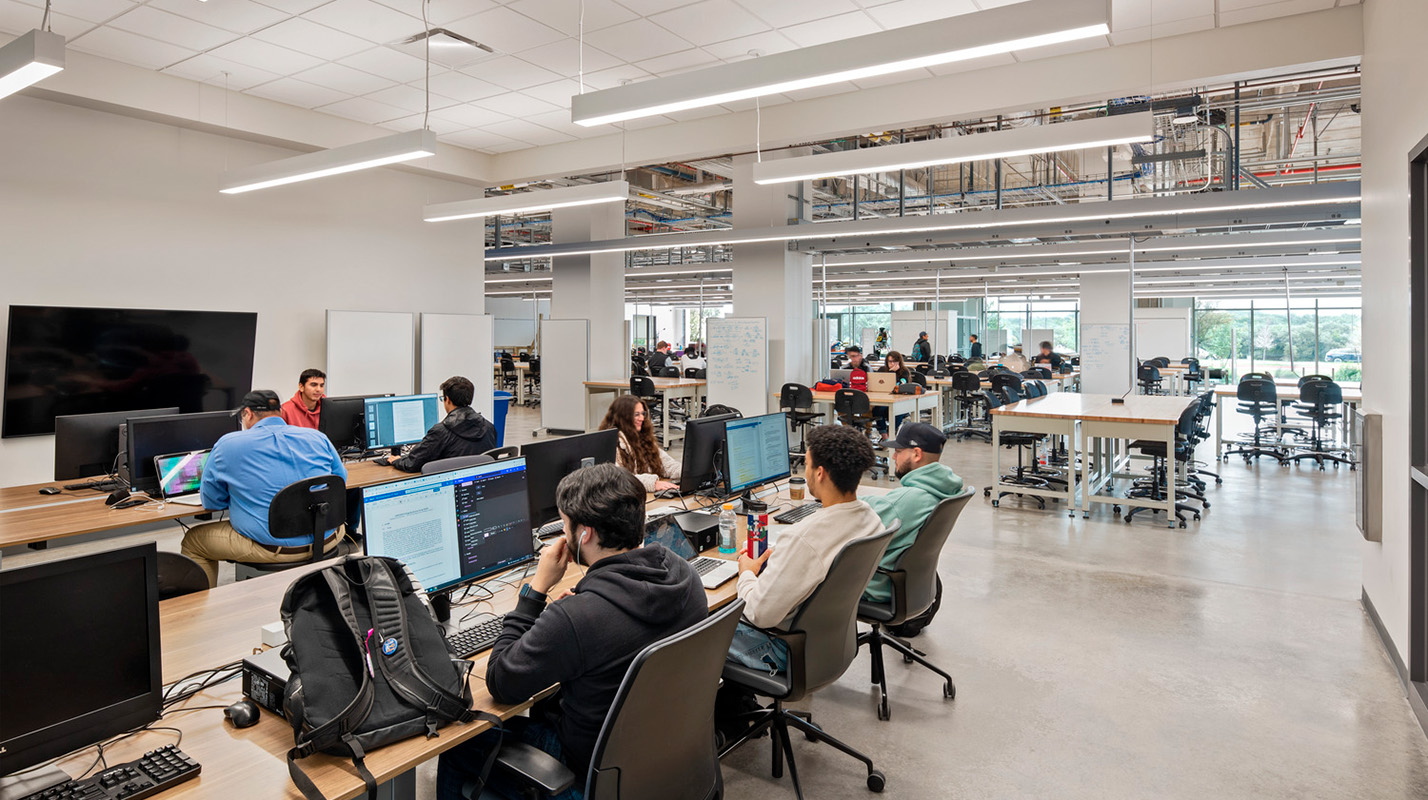
How laboratory design can support multiple disciplines more efficiently
The chemistry and biology departments’ previous instructional laboratories were housed in numerous buildings throughout campus. These facilities were antiquated and operating at capacity, with no room to support growth. Given the specific nature of the instructional laboratories, some spaces were overutilized while other spaces serving specialized classes sat idle for large amounts of time.
By working with the user groups to develop a concept centered around flexible instructional laboratories and adequate laboratory support spaces, we were able to support both introductory and advanced level classes within the same space. This increases efficiency and allows faculty to meet current class-load needs, provide for expansion, and reduce the total number of class sections taught each day.
The Engineering Instructional Labs are designed around themes instead of being dedicated to specific disciplines and eliminates the need for duplicated equipment, allowing for more resources to be dedicated to instruction. This encourages interaction and collaboration between each of the different disciplines. In addition to these instructional labs, the facility also provides spaces dedicated to the new chemical engineering department, including a unit operations laboratory, complete with a distillation column and chemical engineering research laboratories.
